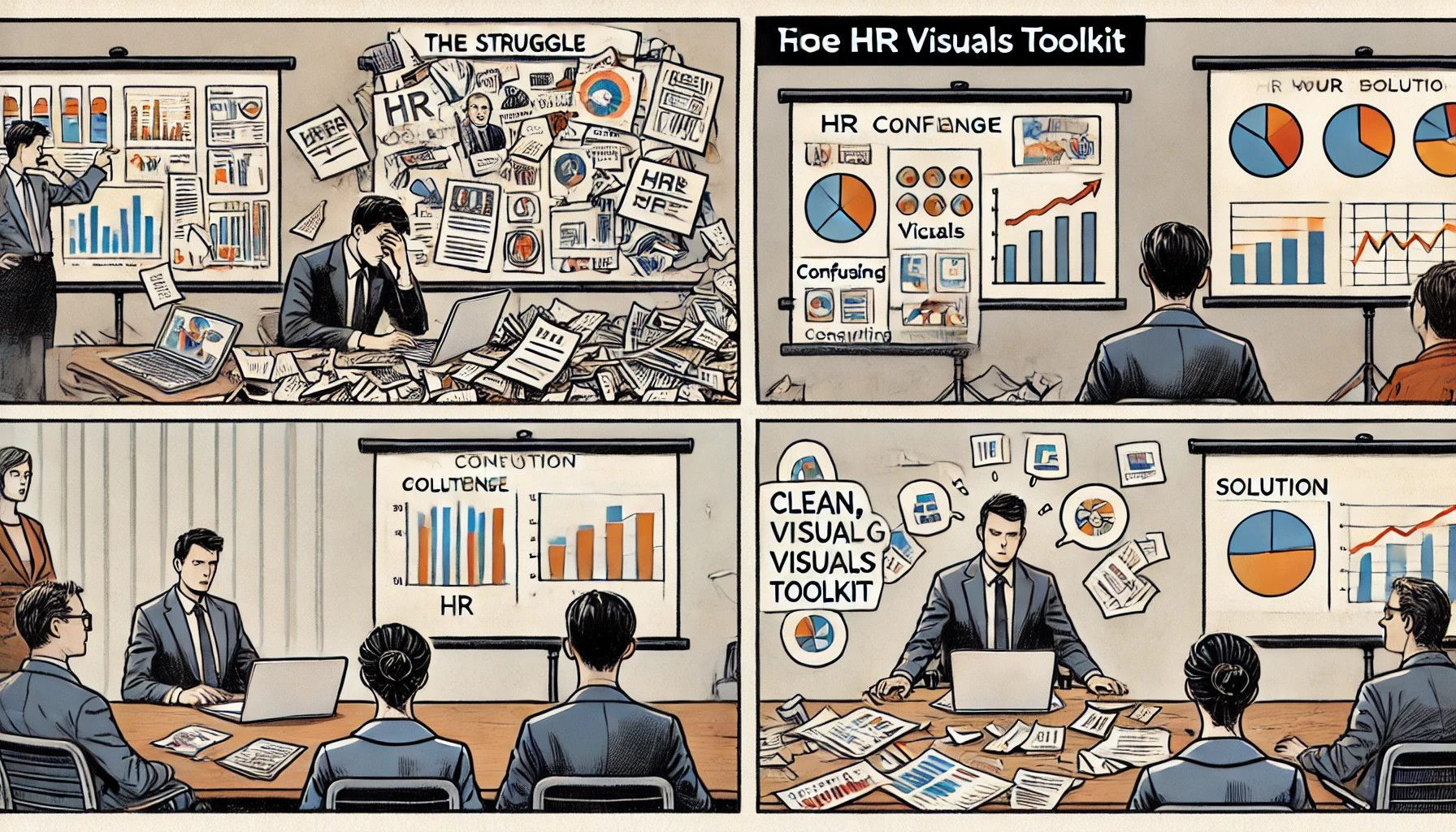+971522037900
mymail@mailservice.com
HR: Feel-good or $$$? Proof that people plans move profits, not just morale, this way...
This is a subtitle for your new post
HR Transformation: Beyond Initiatives - Proving Profit Impact
HR transformation projects are launched with great fanfare. They promise improved employee engagement, enhanced talent acquisition, and streamlined processes. Yet, too often, these initiatives fail to deliver measurable business value. Many HR transformations remain stuck in the realm of feel-good metrics. They lack a tangible link to the company’s bottom line. A Gartner study found that less than one-third of HR leaders believe their HR functions are ready for the future of work. [1] True HR transformation requires a data-driven approach. This approach connects HR initiatives directly to profitability, moving beyond simple implementation without showing the impact.
Rethinking HR's Role: From Cost Center to Profit Driver
The traditional view of HR is as a cost center, a necessary expense. This view limits HR's potential impact. To achieve true transformation, we need to challenge this mentality. HR must elevate its function to a strategic partner. To do tihs, they need to be accountable for revenue generation and cost reduction. This shift requires a fundamental change in mindset. HR must move from simply administering policies, and ensuring compliance with rules and regulations, to actively driving business outcomes, and demonstrating how these outcomes were impacted by HR programs. This evolution enables HR to positively influence the company's financials.
The Employee Experience/Profit Loop: A Quantifiable Connection
The employee experience directly impacts the customer experience. As Simon Sinek famously said, “Customers will never love a company until the employees love it first.”
The customer experience, in turn, drives profit. This is known as the employee experience/profit loop. This concept isn’t theoretical. Research consistently shows a strong correlation between employee satisfaction and customer loyalty. A study by the Temkin Group found that companies with highly engaged employees achieve 20% higher customer satisfaction rates. [2] To leverage this loop, organizations must first understand the employee journey. Employee journey mapping identifies pain points and opportunities. Sentiment analysis can then provide insights into employee morale and engagement.
Consider a company struggling with high call center turnover. By mapping the employee journey, HR might discover that new hires receive inadequate training. This lack of training leads to frustration and poor performance. When the company improves onboarding training, employees feel more confident. They provide better customer service and reduce customer churn. This direct impact on customer retention translates into increased revenue, while a lower cost of employee turnover reduces business expenses. The Aberdeen Group found that companies with strong onboarding processes improve new hire retention by 82%. [3]
Advanced HR Analytics: Beyond Basic Metrics
Traditional HR metrics, such as turnover rate, are lagging indicators. They tell you what
has happened, but they don’t provide insights into what
will happen. Advanced HR analytics use predictive modeling, enabling HR to forecast the impact of HR initiatives on key business outcomes. Machine learning algorithms can analyze vast amounts of employee data to identify patterns and predicts future performance. For example, analytics can predict which employees are most likely to leave. It can also pinpoint the factors that contribute to employee burnout.
Here's a real life use case. Imagine a company wants to improve sales performance. Instead of simply implementing a generic training program, they use analytics to identify the specific skills gaps that are hindering sales. They can use sentiment analysis to understand the needs of their staff. They then create a targeted training program. This program addresses those needs and results in a measurable increase in sales. Custom dashboards can be used visualize the employee experience/profit loop in real-time. These tools allow HR to monitor the impact of its initiatives on business outcomes. They also allow for quick adjustments based on real-time feedback.
Building the Business Case: Translating HR Language into Financial Language
To gain buy-in from C-suite executives, HR must frame its initiatives as investments. They aren't merely expenses. This requires translating HR language into financial language. HR must quantify the return on investment (ROI) of HR programs. For example, Leadership development programs enhance the capability of talent. Well-being programs reduce healthcare costs and improve productivity. Financial models, such as net present value (NPV) and internal rate of return (IRR), can help demonstrate the value of these investments.
Another real life example. A company wants to invest in a new leadership development program. Instead of simply arguing that it’s “good for morale,” HR develops a financial model. The model estimates that the program will improve employee retention by 10%. This will reduce the costs associated with recruiting and training replacements. The model also estimates that the program will increase team productivity by 5%. These metrics translate into significant cost savings and revenue gains. By presenting this financial analysis to the C-suite, HR can make a compelling case for the investment. A study by Bersin by Deloitte found that companies with mature leadership development programs have 37% higher revenue per employee. [4]
Measuring the Intangible: Quantifying the Impact of Culture and Engagement
Culture and employee engagement are often seen as intangible assets. However, their impact on business outcomes is very real. Companies with strong cultures and engaged employees outperform their competitors. Research by Gallup consistently shows that engaged employees are more productive, more innovative, and less likely to leave. [5] Measuring the financial impact of culture and engagement requires innovative methods. Network analysis can identify influential employees and assesses the health of internal communication networks. These days there are some innovative software platforms that can help you identify the "super connectors" in the business. By mapping employee interactions, HR can identify potential communication bottlenecks. It can also pinpoint employees who are particularly effective at sharing knowledge.
A company could use network analysis to identify employees who are central to innovation. By understanding how these employees collaborate, HR can create programs that support their work. This can lead to new product development and increased revenue. Statistical modeling can then link cultural metrics to business outcomes. For example, a company might find that a specific cultural value (e.g., collaboration) is strongly correlated with customer satisfaction. By reinforcing this value, the company can improve
customer loyalty and increase revenue.
Final Word: The Future of HR is Profitability
The future of HR lies in its ability to demonstrate its financial value. HR must embrace a data-driven, profit-focused approach. By connecting HR initiatives directly to business outcomes, HR can become a key driver of business success. This means moving beyond simple metrics, to embracing advanced analytics. It requires building strong relationships with finance and other business functions. HR professionals should embrace this new paradigm as a means of gaining greater respect from the C-suite. Elevating the HR function from a cost center to a profit driver will help companies thrive in an increasingly competitive landscape, especially if the competition has not adopted this approach yet. Get started now with building that business case and move toward long-term HR profitability.
If you need help with building any of this, MData Consultants can help. Drop us a line.
References
[1] Gartner, "Future of Work Trends Report," 2023.
[2] Temkin Group, "Employee Engagement Benchmark Study," 2016.
[3] Aberdeen Group, "Onboarding 2015: A New Look at Best-in-Class Practices," 2015.
[4] Bersin by Deloitte, "High-Impact Leadership: The 6 Building Blocks," 2015.
[5] Gallup, "State of the American Workplace," 2017.
21st Century HR
All Rights Reserved | MData Consulting
We use cookies to make sure that we give you the best experience on our website. To learn more, go to our Privacy Page.






